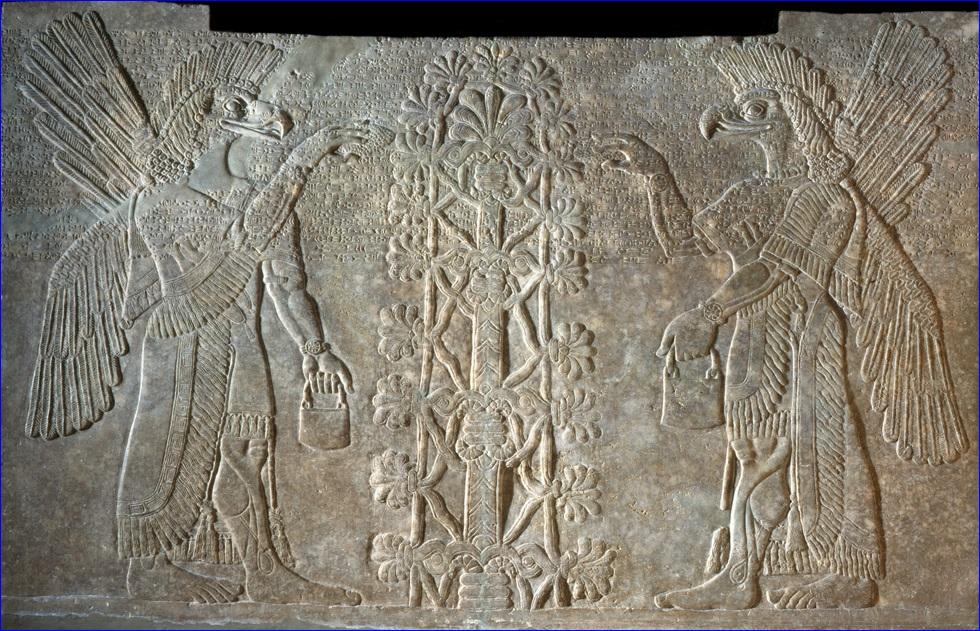


The reliefs have been in Bowdoin's possession ever since, but are now the focal point of a new exhibit entitled "Assyria to America" at the Bowdoin College Museum of Art (BCMA). "This whole exhibition is conceived of as a ... reintroduction and a recontextualization of our reliefs," said Sean Burrus, Andrew W. Mellon postdoctoral curatorial fellow. "They've been here for 150 years, and we want to invite our visitors who have become so familiar with them to look at them in a new light."
In addition to the six Assyrian reliefs, the exhibit will also include loaned artifacts from the Metropolitan Museum of Art and the Harvard Semitic Museum. "We feel like this is part of a larger, shared goal among museums to take advantage of resources in different parts of the world to better understand aspects of the ancient past," said Anne Goodyear, co-director of the BCMA.
"It's really exciting to be able to tell a fuller story of ancient Assyria," agreed Frank Goodyear, co-director of the BCMA.
In order to tell this story, the exhibit is arranged in three time frames in order to tell this fuller story. First is the ancient, which includes the reliefs themselves and other ancient artifacts. Second is the original documents, which narrate the discovery of the tablets and their journey to Bowdoin. Third is the present dialogue which surrounds ancient art as it exists today.
"We have to remember that the past is not neutral--that we, all of us are involved in using the past to tell stories about who we are and how we got to where we are," said Burrus in reference to two modern-day events at the forefront of this exhibit: the looting of the Baghdad Museum in 2003 and the destruction of the original site of these reliefs at Nimrud by ISIS in 2015.
On display are pieces by contemporary Iraqi-Jewish artist Michael Rakowitz. Anne Goodyear noted his work as paramount to understanding the exhibit on a larger scale.
"With the addition of the work of Michael Rakowitz we are able to add an accent of our own contemporary moment through the eyes of an artist to see how and why these objects continue to be resonant in the present day," said Anne Goodyear.
Rakowitz's colorful pieces use Middle Eastern packaging materials to recreate scale replicas of the artifacts lost in a 2003 looting of the Baghdad Museum.
"I wanted [visitors], as they're looking at these ancient artifacts to think deeply about our connections to the past and our responsibilities to the past as well," said Burrus. "And I think [Rakowitz's] works do a really good job of prompting us to think about those issues."
The exhibit takes advantage of modern technology to connect the ancient past to the present day in novel ways. A projector adds color to a relief, allowing visitors a glimpse of its original splendor. There will also be interactive components including a timeline, but most impressive is a replica of a statue of King Ashurnasirpal II. The original statue can be found in the British Museum's collection. This replica was produced from over 1000 pictures taken of the original statue which was then 3D printed into 28 segments.
"We wanted to not only look at these works of art in their context, but also to show how contemporary or more up to date technologies are helping us understand their culture." said Jim Higginbotham, associate professor of classics and associate curator for the ancient collection. "I think that the technology is allowing us to not only just make replicas, but it is an important way going forward, that we can help preserve art that would otherwise be lost."
In conjunction with the opening of the exhibit, Higginbotham and Burrus gave a talk last Thursday highlighting the importance of this exhibit, its historical and present day implications and the story of the relief's long journey to Bowdoin.
The Assyria to America exhibit opens on October 24 and will be up until December 2020. The length of the exhibit will allow for it to be a platform for a variety of programs, educational initiatives and new research. Scholars, researchers and art conservators will be visiting campus to continue to expand the story of the reliefs.
"This exhibition is not the end of a process," said Burrus. "It's the beginning of a process."

or register to post a comment.